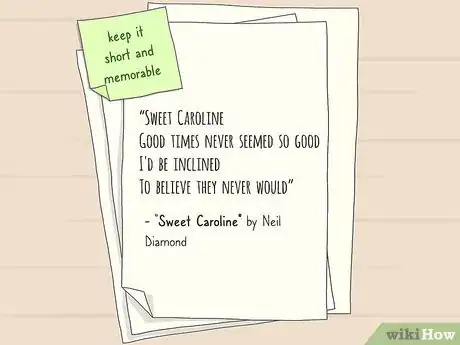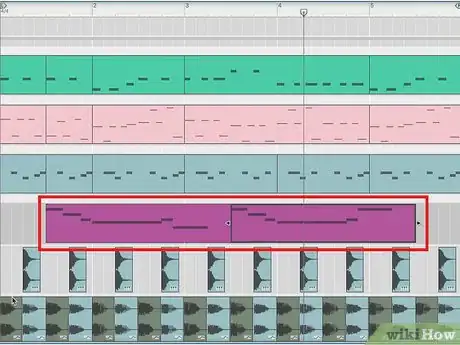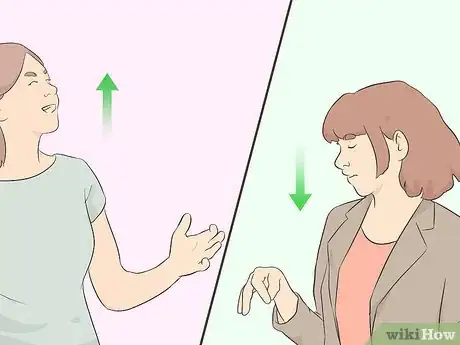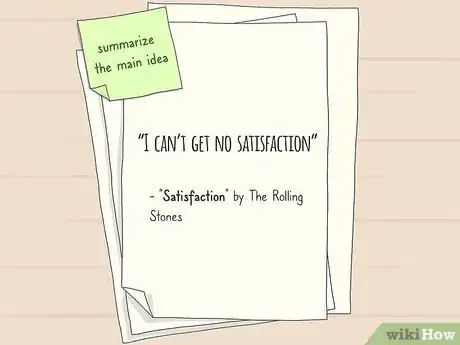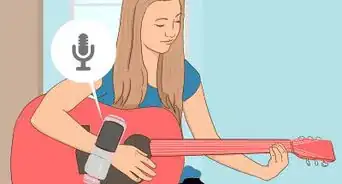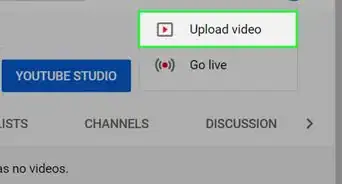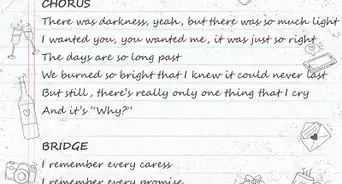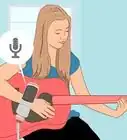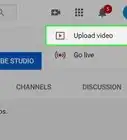This article was co-authored by Tanisha Hall and by wikiHow staff writer, Hunter Rising. Tanisha Hall is a Vocal Coach and the Founder and Executive Director of White Hall Arts Academy, Inc. an organization based in Los Angeles, California that offers a multi-level curriculum focused on fundamental skills, technique, composition, theory, artistry, and performance at a conservatory level. Ms. Hall's current and previous students include Galimatias, Sanai Victoria, Ant Clemons, and Paloma Ford. She earned a BA in Music from the Berklee College of Music in 1998 and was a recipient of the Music Business Management Achievement Award.
There are 7 references cited in this article, which can be found at the bottom of the page.
This article has been viewed 20,628 times.
A hook is a repeated section or element of a song that grabs the listener’s attention and keeps them engaged in the music. Songs tend to have multiple hooks found in various places, such as in the intro, before the chorus, or right at the ending. If you want to make your music more memorable, writing a good hook will help your songs sound catchier. Start by coming up with a melody that fits in with the rest of your song. After that, you can choose to add lyrics to your hook if you want.
Steps
Writing a Catchy Melody
-
1Make the hook 4–8 beats long so it’s short and memorable. Hooks that are too long will be difficult for a listener to remember, so it’s less likely that your song with stick with them. Count out how long it takes for 4–8 beats to play in your song so you know how much time you need to fill with the hook. As you brainstorm your melody, keep the time frame in mind so you don’t go over it.[1]
- It’s okay if you want to make the hook shorter or slightly longer, but it may affect how well it sticks with a listener.
- The duration of 4–8 beats depends on the tempo of your song, but it usually lasts around 3–5 seconds.
-
2Change the rhythm of the hook to make it stand out more. If your song follows the same rhythm for the whole time, the listener will get bored and the song will sound monotonous. Try arranging the beat of your hook differently than the verse or the chorus so your song has more variety. Combine shorter notes with longer-held notes to make the rhythm interesting and syncopated.[2]
- For example, in Elton John’s “Bennie and the Jets”, one of the hooks in the chorus is stuttering “B-B-B-Bennie and the Jets.”
- If the part of the song before or after your hook has multiple short notes, try using longer notes in the hook to make it sound different. If the verse and chorus are held longer, then try short, syncopated notes in the hook.
Tip: Try pausing briefly before you start the hook to add more emphasis and make your listener anticipate it.
Advertisement -
3Use a unique instrument in your hook if you want it more prominent. Look for an instrument you haven’t used in the song or sounds different from others you included in the track. Experiment with the rhythm and melodies you’re using on the instrument to see how well it fits with the rest of the song. Make sure you don’t play the instrument in other sections of your song, or else it won’t feel as special in the hook.[3]
- For example, the song “Good Vibrations” by The Beach Boys uses a theremin in the hook so it stands out from the verse and chorus.
- You can also try using different rhythm instruments, such as a triangle or a cowbell, to make the beat more prominent. For example, “(Don’t Fear) The Reaper” by Blue Öyster Cult features cowbell prominently during the intro hook.
-
4Repeat note patterns in the hook to make it feel familiar to listeners. If you have a melody that’s 2 or 4 beats long, repeat it twice during your hook so the listener is more likely to remember it. Try changing the last 1–2 notes of the melody when you repeat it so the beginning sounds the same but stays interesting for the listener. As the hook repeats throughout the song, it will be more likely that people will have that part stuck in their head.[4]
- Even though the repeated notes are the same, they may feel slightly different depending on what other notes they’re interacting with.
-
5Put a high or low note in the hook if you want to make it attention-getting. Sometimes referred to as the “money note,” a higher or lower pitch in the hook will create a memorable sound that’s not repeated anywhere else in the song. Experiment with the tone of various notes, and try pushing them to either a higher or lower octave. Play the hook to see if it still fits with the rest of your song or if it feels too out of place.[5]
- For example, in “Friends in Low Places” by Garth Brooks, the lowest note occurs during the hook, “‘Cause I got friends in low places.”
- Don’t change between high and low notes too frequently since it can make the hook jarring to listen to.
-
6Repeat the hook multiple times in the song so listeners will remember it. The more that your listener hears a hook, the less likely they are to forget it. You can use the hook as an intro, before or after the choruses, or near the end. Aim to include your hook about 2–3 times throughout the length of your song so it’s familiar enough to your listener without overusing it.[6]
- Be cautious of repeating the hook too many times throughout the song since it may start to feel boring.
Adding Lyrics to Your Hook
-
1Include the name of the song in the hook if you want it easily recognizable. Putting the name of the song in your hook helps listeners find your music and remember it more. Make sure that you sing the words clearly so other people understand what you’re saying and can repeat it. If you include the name of the song in your hook, don’t use it anywhere else in your song, or else it won’t be as memorable.[7]
- For example, “Sweet Caroline” by Neil Diamond has the name of the song repeated loudly at the beginning of each chorus so it’s easy to sing along with.
- Don’t try to force the name of the song into the hook if it doesn’t fit rhythmically or melodically.
-
2Summarize the main idea of the song to help the hook sound cohesive. Each song has its own meaning to the songwriter, but you can use your hook to tell your listeners the point you’re trying to make. Think about the main feelings or themes for the rest of the song’s lyrics so you can write them into your hook. Experiment with different ways to phrase the lyrics with the rhythm and melody you already made until you’re happy with how it sounds.[8]
- For example, in the song “Empire State of Mind” by Jay-Z and Alicia Keyes, the lyrics of the hook talk about the feelings you would experience in New York City.
- As another example, “Satisfaction” by The Rolling Stones states, “I can’t get no satisfaction.”
- Make sure to keep it simple and repetitive, with usually three or four notes long. For a good hook, the starting note before you enter your subharmonic or lower vocal range should be the note that you naturally speak at.
Warning: Avoid repeating words from your hook in the rest of the song since they won’t feel as powerful.[9]
-
3Add nonsense syllables if you want to encourage people to sing along. Nonsense syllables, such as “hey,” “na-na-na,” or “la-da-da,” give your listeners something easy to chant or sing while they listen to your song. If you aren’t able to think of lyrics for your hook, try making sounds that people could shout or sing along with. That way, you can easily get a crowd to participate while you perform live.[10]
- For example, in the song “Havana” by Camila Cabello, the first lyric is, “Havana, ooh-na-na.”
- Try stuttering words to make them more memorable. For example, David Bowie sings, “Ch-ch-changes,” during his song “Changes”.
-
4Put effects on the vocals if you want them to sound unique. Effects, such as auto-tune, reverb, or echoes, can all make a hook seem more prominent. If you’ve already written and performed the lyrics, play around with various effect filters in your recording software to see how you can change the vocals. Continue playing around with the settings on the effects to see how they fit the rest of your song.[11]
- For example, the first line of “Believe” by Cher is auto-tuned that makes the line, “Do you believe in life after love?” more recognizable and catchy.
- Don’t use the same vocal effect in other places of your song, or else it will be hard to determine which parts are the hooks.
Expert Interview

Thanks for reading our article! If you'd like to learn more about writing hooks for songs, check out our in-depth interview with Tanisha Hall.
References
- ↑ https://www.lessonface.com/content/how-write-better-hook
- ↑ https://flypaper.soundfly.com/write/write-lyrical-hooks/
- ↑ https://www.bmi.com/news/entry/how-to-write-song-hooks-that-hook-you-in
- ↑ https://youtu.be/CpRkoZs1Bvc?t=351
- ↑ https://www.bmi.com/news/entry/how-to-write-song-hooks-that-hook-you-in
- ↑ https://flypaper.soundfly.com/write/write-lyrical-hooks/
- ↑ https://online.berklee.edu/takenote/how-to-write-songs-with-killer-hooks/
- ↑ https://www.lessonface.com/content/how-write-better-hook
- ↑ https://flypaper.soundfly.com/write/write-lyrical-hooks/
